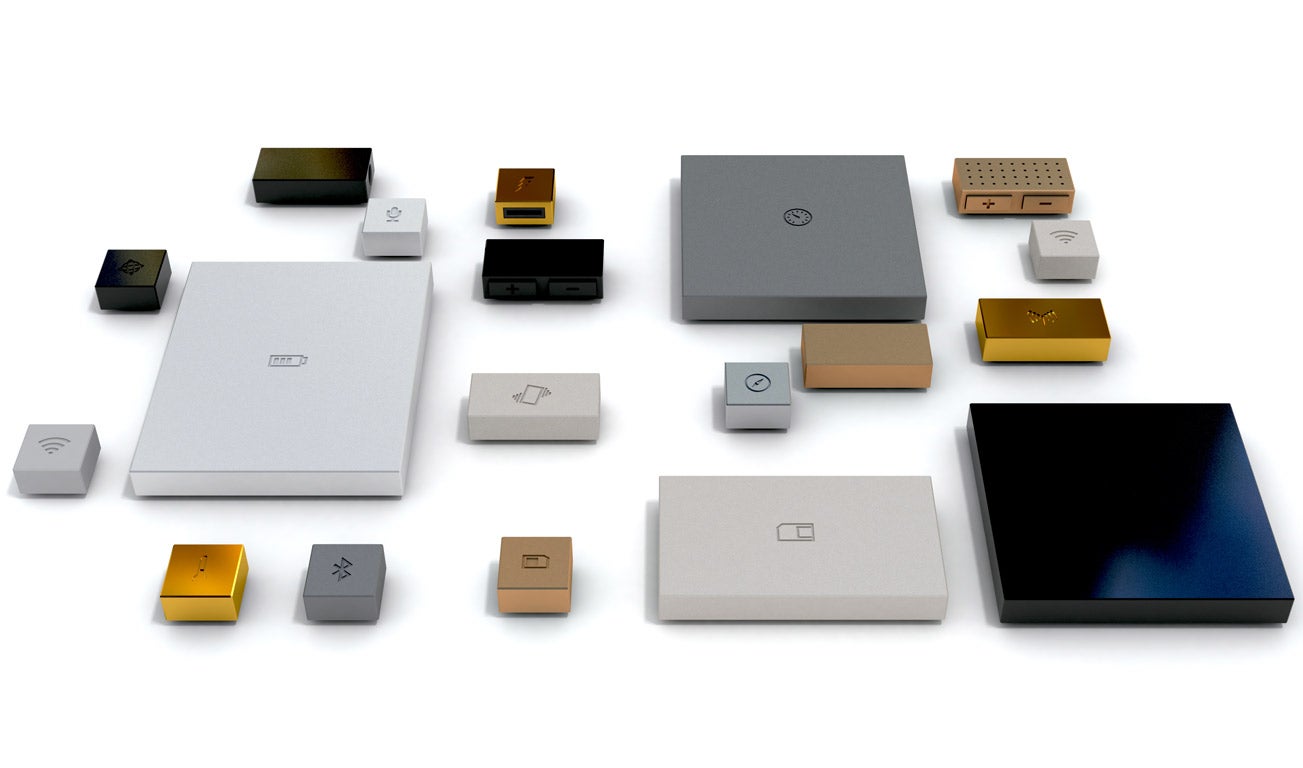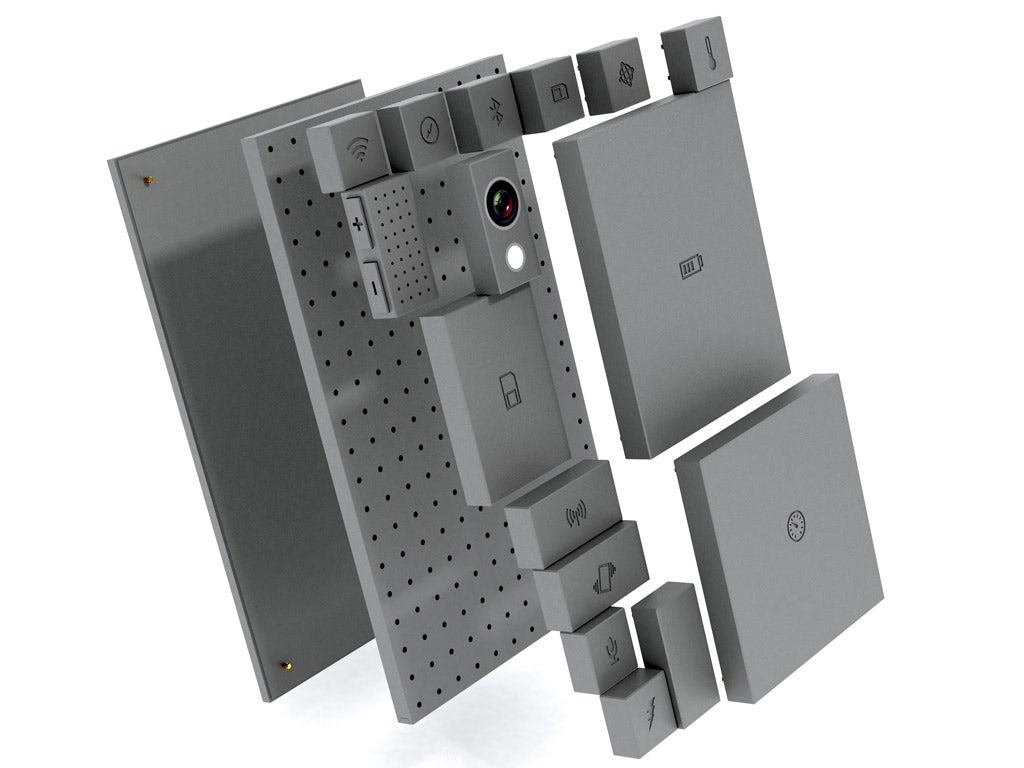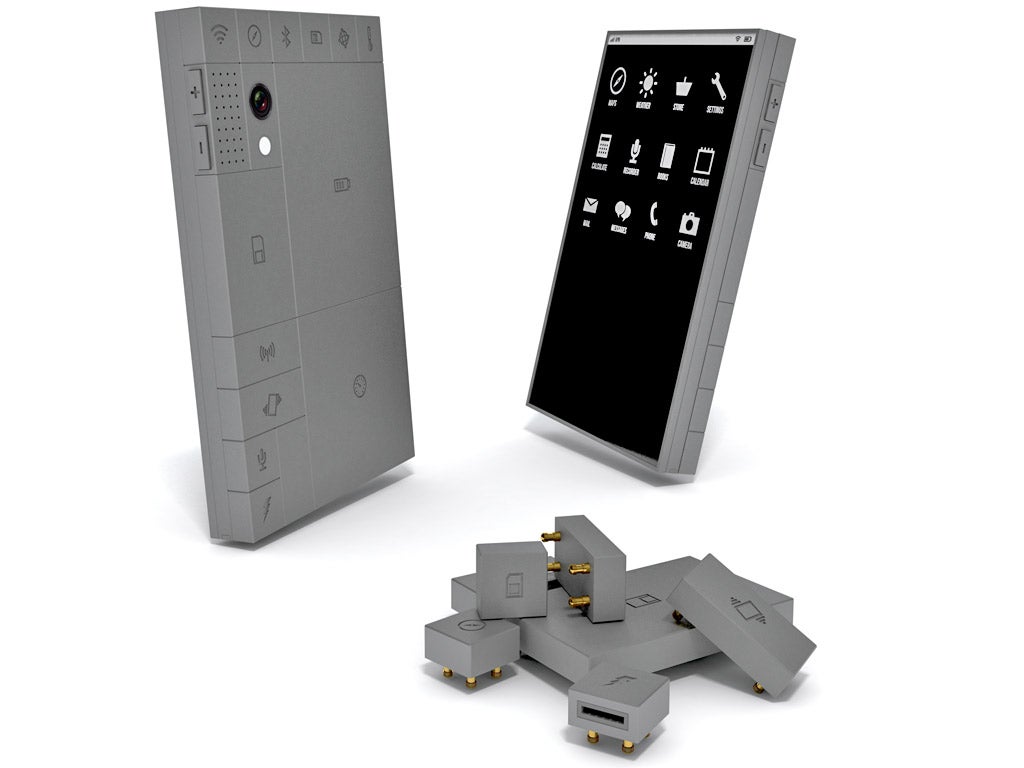Can a concept modular phone put together by consumers make it in the real world?
Motorola thinks so. Edwin Smith talks to the man with the DIY vision
Your support helps us to tell the story
From reproductive rights to climate change to Big Tech, The Independent is on the ground when the story is developing. Whether it's investigating the financials of Elon Musk's pro-Trump PAC or producing our latest documentary, 'The A Word', which shines a light on the American women fighting for reproductive rights, we know how important it is to parse out the facts from the messaging.
At such a critical moment in US history, we need reporters on the ground. Your donation allows us to keep sending journalists to speak to both sides of the story.
The Independent is trusted by Americans across the entire political spectrum. And unlike many other quality news outlets, we choose not to lock Americans out of our reporting and analysis with paywalls. We believe quality journalism should be available to everyone, paid for by those who can afford it.
Your support makes all the difference.Your phone rings. You whip it out, but at the crucial moment it slips from your grasp and, like a buttered slice of toast, lands face-down on the floor. When you pick it up, you see that you've smashed the screen (again). "Spider-webbed" is what it's known as in the trade.
Do you send it off to be repaired and try to manage without for 10 days – and pay £60 for the privilege? Or do you try to get an upgrade so you can ditch your old, broken handset? You would have been due one soon, and there's probably something better on the market now anyway, right?
On an individual level, that makes sense (even if you do end up paying for the new phone through your contract). But if modern technology has taught us anything, it's that we're all interconnected; and this kind of groupthink is creating a growing problem. Mountains of e-waste containing lead and other hazardous materials are springing up all over the world. And mobile phones are the worst offenders, with only 11 per cent of the devices recycled in the US. When you consider that the industry ships 1.8 billion new units per year, the scale of the issue starts to make you giddy.
Of course, it doesn't have to be like this. We don't need to upgrade or replace our handsets so often. But doesn't that mean we have to be content to lug around outdated, unfashionable technology? Not according to a 25-year-old Dutch designer called Dave Hakkens.
Last month, Hakkens posted a video on YouTube that presented his Phonebloks concept – a vision for a modular smartphone that could be put together by consumers as if they were making it out of building blocks. There would be a standard-sized "base" or motherboard and after that it would be up to you to plug in components ('"bloks") as you chose. As the video says, if you "love to take pictures, why not upgrade your camera?" Or if you use cloud storage, why not replace your storage blok with a larger, longer-lasting battery? And if a part breaks, or you want a newer version, you need only to replace the relevant part. No need to pay for, or dispose of, a whole phone.

The video racked up an astounding 12 million views in a week and, perhaps feeding off the vogue for customisable computing that has seen the Raspberry Pi mini-PC and Bug Labs (a company offering snap-together modules to help with creating prototype products) win hearts and minds in technology circles, received reams of positive feedback. So much so, that using a platform called Thunderclap, which allows projects to piggyback on the social-media reach of willing individuals and send a synchronised message to their friends and followers, the Phonebloks philosophy was shared with 350 million people earlier this week.
Speaking to me via a Google+ Hangout from his home studio, Hakkens, who only graduated from design school in Eindhoven this summer, says he believes that a system whereby people could buy individual parts from multiple manufacturers could extend the life of phones and eliminate "built-in obsolescence". "The phone companies are capable of building a phone that lasts for 10 years," he says. "But the strategy and the economic system are not built in that way. My idea is to have an open platform so other companies can get involved and sell their blok."
Hakkens admits, though, that translating the theory into practice will be a major challenge. "Some people say it's impossible," he says, "some say it's possible. So I think it's probably somewhere in the middle."

Of those who think that it won't work – and there are many – the most damaging engineering-based criticism seems to be that, by separating a phone's constituent parts and lengthening the distances that electrical signals have to travel, the device will inevitably end up running much more slowly.
"With current tech it would be difficult to make it work," says Hakkens. "The technology that's used now is not even a little bit designed to be modular or upgradable. But I believe that if we set the target and work towards it, then we can make it happen."
This week, the idea received impressive industry backing. On Tuesday, Google-owned mobile company Motorola announced plans to work with Hakkens to develop a free, open hardware platform for creating modular smartphones. Called Project Ara, Motorola put out a statement saying that: "We want to do for hardware what the Android platform has done for software: create a vibrant third-party developer ecosystem, lower the barriers to entry, increase the pace of innovation, and substantially compress development times."

But even if the Motorola-backed technology can make Hakkens' vision a reality, there will be other obstacles for Phonebloks to overcome, says Natasha Lomas, a writer for the technology website TechCrunch. The handset market is dominated by Samsung and Apple. Samsung sells more than double the handsets of its Californian rival, which, in turn, sells more than three times as many as the nearest challenger.
"Even companies that have been doing it for a long time with huge marketing budgets still aren't able to break through," says Lomas. "If BlackBerry can't make it work with its budget, there's no way a project like this is going to."
However, Phonebloks wouldn't be the first invention to meet with success after being dismissed by critics. At one time or another, the lightbulb, the television, the fax machine and the microchip have all been dismissed as useless, impractical or too expensive to catch on. Things change quickly.
But, Lomas warns, it may, somewhat ironically, be the speed at which technology is developing that scuppers Phonebloks' chances. "The pace of change in the industry is so quick, you just can't plan for a handset that far in advance," she says. "We might not even be using phones in a decade, we could be using a chip in our brains or something like that." Perhaps there's a video on YouTube about that, too.
Join our commenting forum
Join thought-provoking conversations, follow other Independent readers and see their replies
Comments